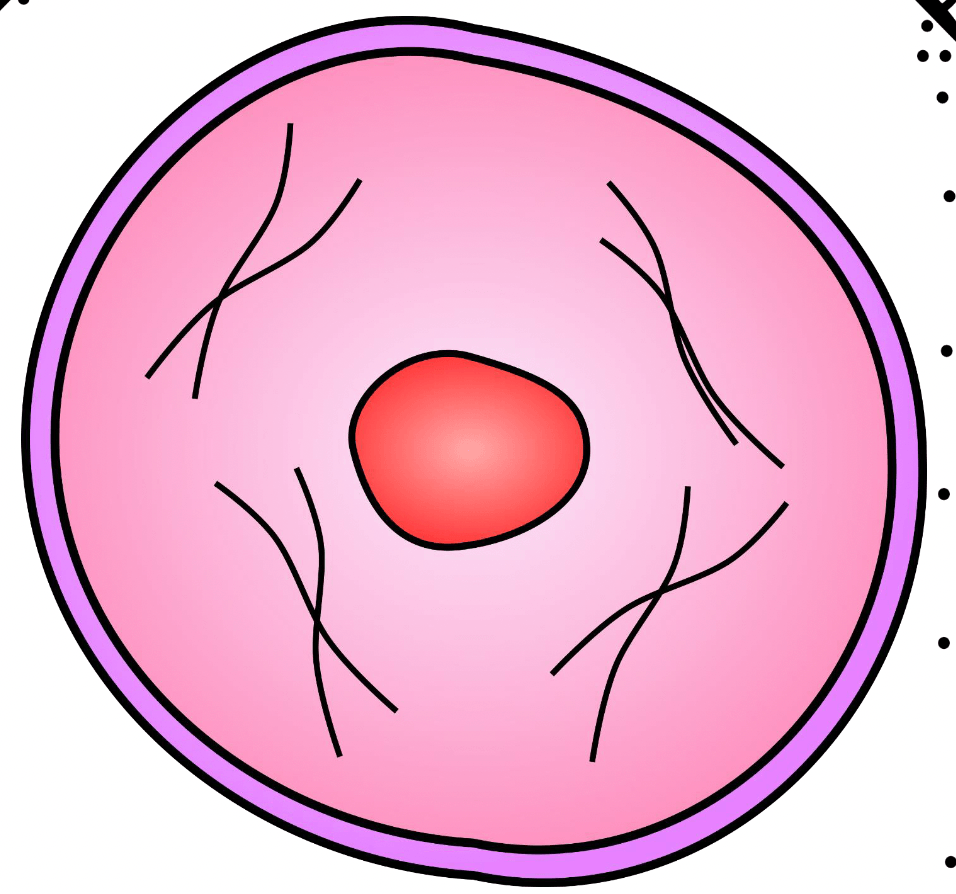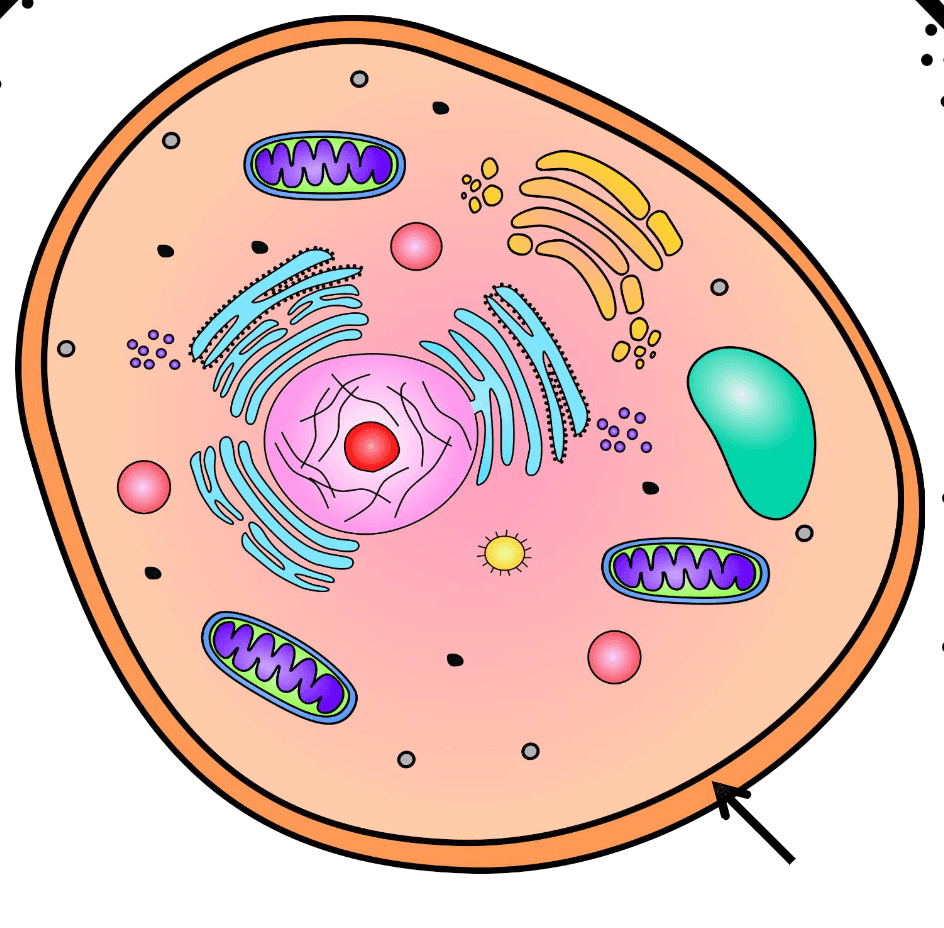What is this organelle?

Nucleus
What does G stand for?
Growth
Do muscles exist on their own or in pairs?
Pairs e.g., bicep and tricep are a pair.
What organ pumps blood around the body?
The heart.
What is the main organ involved with drawing in oxygen?
Lungs.
What substance is found inside the nucleus?
DNA
What does the N stand for?
Nutrition
What holds bones together?
Joints
Which blood vessel takes blood BACK to the heart?
Veins
What is the scientific name for the throat?
Trachea
What is the outside of a cell called?

Cell membrane
What does the E stand for?
Excretion.
What connects muscles to bones?
Tendons
Name the three types of blood vessels.
1. Arteries
2. Veins
3. Capillaries
What are the two tubes called that lead to each lung?
Bronchi
What is this organelle?

Mitochondria
Is fire living or non-living? Explain using MRS C GREN.
It is non-living. This is because all the parts of MRS C GREN do not apply to fire. For example, fire is NOT made up of cells.
What substance is found between bones to make then move smoother?
Cartilage.
What is the MAIN function of blood?
Carries oxygen around the body.
What is the smallest part of the lungs (i.e., where gas exchange actually occurs)?
Alveoli
What is the liquid substance called that lets the organelles float in the cell?

Cytoplasm
What is MRS C GREN used for?
To tell if something is living or non-living.
What is the disease where cartilage wears away in between bones?
Arthritis.
What is found in veins to keep the blood moving in the correct direction?
Valves.
What process is oxygen used for? Give the word equation.
Respiration.
Glucose (food) + oxygen -> energy + carbon dioxide + water